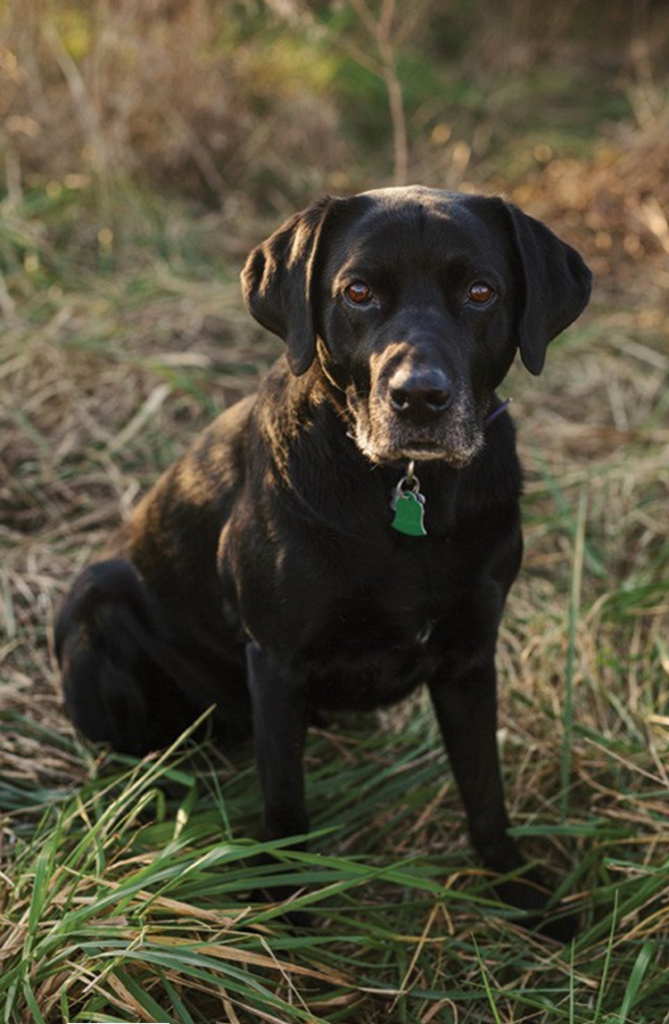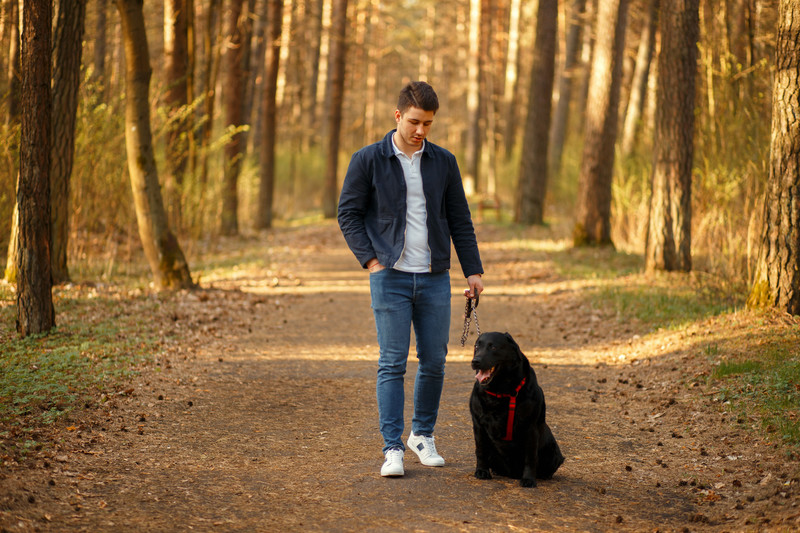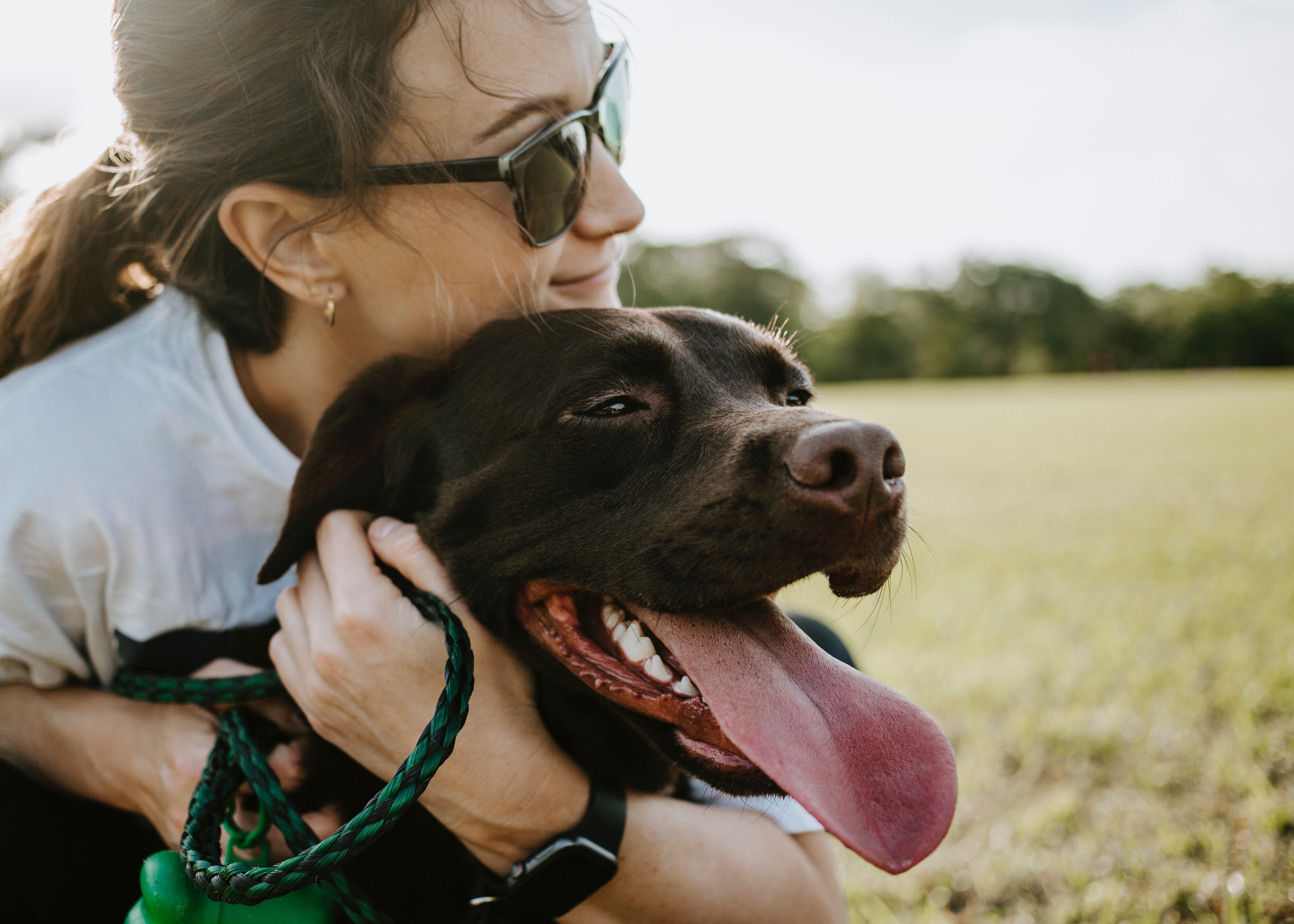by Michael Flexsenhar III
My two black Labs, Sheba and Lulu, sprinted ahead. Their paws thumped the moist ground, and they disappeared through the brush to their favorite spot. I paused to catch my breath. I walked down the path to the water’s edge
where they were waiting for me. The park’s off-leash trails wound through the cedar trees of Texas Hill Country and led down to the confluence of two creeks that formed a deep-water cove in the limestone bed. The spring-fed water was clear and cool. Just what Labs like.
Sheba and Lulu stood on the outcrop above the water, tails up, noses pointed out, anticipating the splash of the orange training bumper that would launch them into the water. I stepped forward and tossed it. They hurled themselves into the water, and once surfaced, they glided toward their quarry. All of their retriever genetics were clicking. Lulu mouthed the bumper first and brought it back to me. Unless I rigged the retrieve in Sheba’s favor, Lulu always won. At two years old, she was the fasted Lab I’d ever seen – on land or in the water. Dropping the bumper at my feet, she shook herself, spraying me with water, then pointed again on the edge, ready for the next retrieve. I threw the bumper. Two splashes. They were off again. They knew the routine.
The game was, we’d run from my car to this swimming hole. They would retrieve while I exercised on the outcrop, then we’d finish our run. But on this evening in June 2015 as I waited for the bumper to reappear next to me, I noticed something odd. Farther downstream, the creek was nearly dried up. The pool where the dogs were swimming seemed to now be the end of the two creeks. The smaller creek water on my left, which was usually a trickle, sounded louder. I figured it was all from the big rain storms of the past few days.

I threw the bumper for another round. Again, Lulu was on track to get it first. Sheba, knowing she couldn’t win that one, climbed up beside me, shook off, and waited for the next one. Then on my left, I caught Lulu in the corner of my eye, swimming hard after the bumper that, for some reason, was drifting back toward me. That was the last time I saw her.
Before we had kids, my wife and I decided to get another Lab. I’d had Sheba since I was single; I’d brought her home at eight weeks old. Now at four years old, she was well-trained and fully integrated into our lives. But one day my wife, perhaps in nesting mode, looked at pictures of black Lab puppies online. Soon we were adopting a black Lab. We chose an adoption agency that adopted Lulu at less than a year old, she’d already had a rough start.
She had experienced a few owners, and one of them, it seemed to us, had not been entirely kind. Lulu had some anxiety. If we were petting Sheba, Lulu shouldered her way in, desperate for a hand on her head. If we were retrieving, Lulu would twitch in expectation of my throw, as if my approval depended on her speedy, successful retrieve. She also, we learned after we had our first child, was wary of children – not atypical for previously owned dogs. Sweet and loving, nonetheless, Lulu, above all wanted to be part of a pack. She needed acceptance.
Back on the outcrop, I began looking around. “Where’s Lulu?” I asked Sheba. I called her. She never runs off, I thought. I looked around. Nothing. My calls became more urgent. The sound of water on my left now grabbed my attention. It seemed the creek water was not running downstream at all, but back underneath the rocky point I was standing on. I lay down, reached my hand under the rocks, felt for something, anything, screaming for Lulu over the rushing water. Then I jumped in. Immediately, I felt the power of surging water pull me into the rocks. Sheba wanted to follow me. “Back!” I yelled. Waist deep bracing myself in a crevice, I reached my whole arm under the rocks. I felt a huge hole sucking in tons of water. Horror.
I tried to tell myself that it wasn’t possible, but I couldn’t avoid it. Lulu was gone. I leashed Sheba and stepped away, wailing. I called 911, I called the city Parks and Recreation, anyone who might be able to help. No one could. By now it was nearly dusk. At last, I called my wife. Our neighbors came to the house to keep an eye on our little boy. My wife met me at the park. I was a wreck. I’d left my car with two black Labs, now I walked back to the car with one. Lulu’s leash dangled in my hand.
“Labs are often so eager to please their owners, they might endanger themselves
for our sake. Sometimes we have to save them from themselves and call them off their retrieve.’’
Over the next few days, to help cope with the tragedy, I learned about all the forces out of my control that led to Lulu’s death. I talked first with the city hydrologist. Back in the 1930s, the hydrologist said, the city’s gigantic sewer pipes had been laid underneath or parallel to the city’s surrounding creek beds. The idea, the hydrologist explained, was that the natural flow of the creeks provided a ready-made hydraulic flow for rain runoff. It was much easier to lay pipes along creek beds than break new ground. The recent rainstorms had created flashfloods in the creeks that evidently had moved enough rocks, and with such force, that they must have cracked one of the pipes beneath the creek. That pipe must have been under the outcrop where my Labs retrieved, I thought.
Then, I got a call. It was a manager from one of the city’s wastewater treatment plants, the plant downstream from the creek that handled the rain water and debris from the district around the park.
He said they’d heard I’d lost a dog in the creek and that I’d been asking around. On their plant’s meters they’d noticed an enormous spike in the volume of water – on the order of millions of gallons more per minute than what was typical. They knew there must have been a break in a pipe somewhere that was slurping up a creek. This explained why, on the evening when I left the park, I had seen a city truck parked nearby with its yellow lights flashing.
The break in the pipe is how I lost Lulu. The water pulled her and she swam right into pipe. The manager apologized for the accident and extended the city’s condolences. “All of us are dog owners,” he said. Still, I needed to know: “Did you find any remains?” The manager sighed. Among the detritus that the plant’s huge grates had caught during the uptick in water, they had, indeed, found the remains of a black dog.
In the months after Lulu’s death, I stopped blaming myself. Thankfully, Sheba helped. We kept up our normal walks and “bumper time,” and a week after the accident, she took a family trip to the coast with us where she got plenty of love. Plus, I had a one-year-old son who kept me preoccupied. Soon I was out of the country for a month on a work trip. But I asked myself, “What lessons could I learn from such a freak accident? What would I tell other Lab owners?”

One lesson is what in the military we call situational awareness: Know your environment. Whenever you take a Lab out to retrieve in bodies of water, it’s wise to first carefully survey for any irregular flow or hazardous objects. You should also listen for any rushing water that could signal danger and watch your Lab the whole route back for any signs of trouble.
Another lesson I learned is how each Lab is different, although they possess many of the same traits. We should know them as best we can. Labs were bred to retrieve in some of the toughest conditions. When they are chasing their quarry, their DNA is firing on all cylinders. They can become fixated. And Labs are often so eager to please their owners, they might endanger themselves for our sake. Sometimes we have to save them from themselves and call them off their retrieve.
Finally, adopting a Lab from a rescue can be a wonderful addition to a family, and in some cases can make a Lab’s life. But rescues often have unseen scars. Owners should try to create the most affirming environment possible with treats, pats, walks, and play. We are thankful for the time we had with Lulu. We know that we gave her a good life, even if it was cut short. She was so sweet and so happy to be in our pack.
This article was originally published in the May/June 2023 issue of Just Labs. You can purchase that individual back issue in our storefront.








